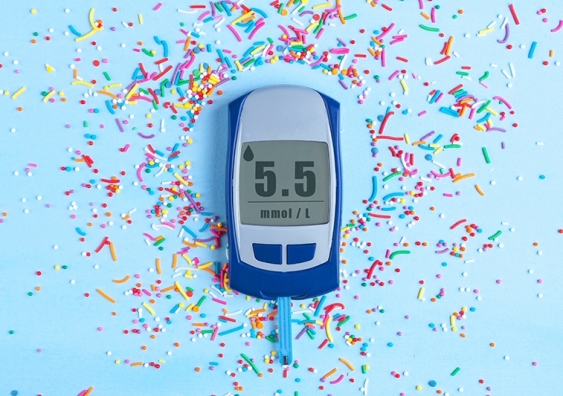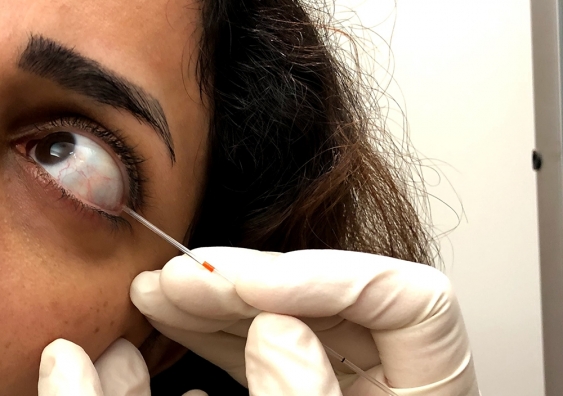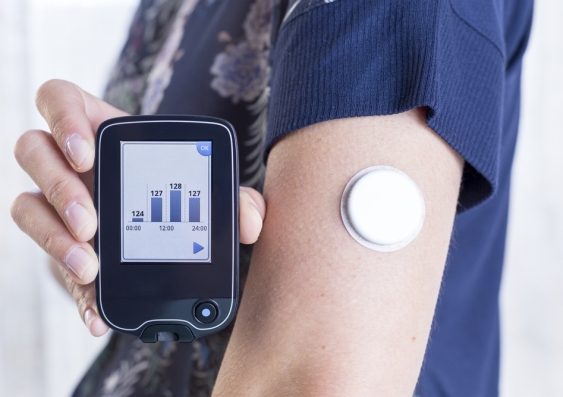Highlighting research on World Diabetes Day
This World Diabetes Day, UNSW is highlighting the recent advances its academics and students are making in diabetes research.
This World Diabetes Day, UNSW is highlighting the recent advances its academics and students are making in diabetes research.

Sherry Landow
News & Content Producer
(02) 9065 4039
s.landow@unsw.edu.au
World Diabetes Day, held annually on 14 November, is an opportunity to raise awareness about the disease and how it can be better prevented and managed.
It’s also a chance to highlight the advances made by those working in diabetes research, whether through increasing knowledge of the disease or finding new ways to manage it.
UNSW academics and students are making headway in diabetes research, from alumna developing non-invasive insulin devices, to researchers finding new ways to detect diabetes complications. Read on to learn more about the latest discoveries and projects.

Continuity: Non-Invasive Glucose Responsive Insulin, won a Gold Award in the Next Gen Student Awards category.
UNSW Sydney Industrial Design graduate Frédérique Sunstrum was named a runner-up in the Australian heat of the annual James Dyson Award for her invention, Continuity: a non-invasive diabetic device that monitors glucose levels and delivers insulin.
Based on her final year project, Continuity offers a solution to diabetics without the need for painful and time-consuming needles and strips that are currently on the market. It is an earring-like device that applies continuous 24/7 glucose monitoring and a handheld oral inhaler to deliver pre-dosed insulin that is absorbed into the inner lining of the cheeks.
“It means the world in my industry to be recognised by arguably one of the best designers in the world, especially for a project that I’m so passionate about,” said Frédérique, who is now a first-year PhD student in psychology and industrial design at UNSW.
Find out more: https://newsroom.unsw.edu.au/news/art-architecture-design/students-design-solutions-global-issues

Tear sample collection in process. Photo: UNSW
Tear-testing may be the future of screening for diabetic peripheral neuropathy, a debilitating condition that affects people with diabetes, new research from UNSW Sydney suggests.
The study, recently published in The Ocular Surface, is the first to show that peripheral nerve damage – often the earliest sign of the condition – can be traced in tear film.
“We found that people with type 1 diabetic peripheral neuropathy – which can result in recurring ulcers of the feet and in severe cases require amputation – have reduced levels of a protein known as ‘substance P’ in their tear film,” says Dr Maria Markoulli, senior author of the study.
“119,000 Australians have type 1 diabetes. In the future, they may be able to have a quick tear sample collected either at their optometrist, the chemist, GP or endocrinologist, and be told whether they are at risk.”
Find out more: https://newsroom.unsw.edu.au/news/science-tech/tear-samples-could-help-detect-diabetes-complication

Photo: Shutterstock
A global study of 12 million people has found diabetes increases the risk of heart failure and this increase is greater for women than men.
Researchers from The George Institute for Global Health determined that this differential was greater in type 1 than type 2 diabetes. Type 1 diabetes is associated with a 47% excess risk of heart failure in women compared to men, while type 2 diabetes has a 9% higher excess risk of heart failure for women than men.
The findings published in Diabetologia (the journal of the European Association for the Study of Diabetes [EASD]) highlight the need for further sex-specific research into diabetes and how the condition can potentially contribute to heart complications.
Find out more: https://newsroom.unsw.edu.au/news/health/diabetes-increases-risk-heart-failure-more-so-women-men

To obtain data from a glucose monitoring patch, a reader or compatible smartphone is simply scanned over the sensor for one second. Image from Shutterstock
Diabetes is the fastest growing chronic condition in Australia. At least 1.2 million Australians live with diabetes, and about 10% of them have type 1 diabetes. People with diabetes, particularly type 1, must continually monitor their blood glucose levels to manage their condition. Over the years, a number of different innovations have allowed people to do this.
The most traditional method is finger prick testing, which requires a person to prick their finger to draw a drop of blood. They test the blood on a strip that’s inserted into a blood glucose testing device, and must do this several times a day. This technique can be painful and disruptive.
But now we have a new and exciting tool that can help ease this burden for people living with type 1 diabetes. It’s called the flash glucose monitoring system.
Find out more: https://newsroom.unsw.edu.au/news/health/flash-glucose-monitoring-little-patches-can-make-managing-diabetes-whole-lot-easier

Professor Perminder Sachdev AM and Professor Henry Brodaty AO
Co-Directors of the UNSW Sydney’s Centre for Healthy Brain Ageing (CHeBA), Professor Perminder Sachdev and Professor Henry Brodaty, have announced their involvement in a $2 million Federal funded clinical trial to test diabetes treatment for dementia.
The Boosting Dementia Research Grant has significant potential to help slow or stop cognitive decline and structural brain changes in people at risk of dementia.
The pioneering study, led by Garvan Institute of Medical Research’s Professor Katherine Samaras, will assess whether metformin, a common type 2 diabetes treatment, can help prevent dementia from developing. Metformin is derived from French lilac and has been used safely to treat type 2 diabetes for 60 years.
Find out more: https://med.unsw.edu.au/news/2-million-test-diabetes-treatment-prevent-dementia
For information about diabetes, visit Diabetes Australia.